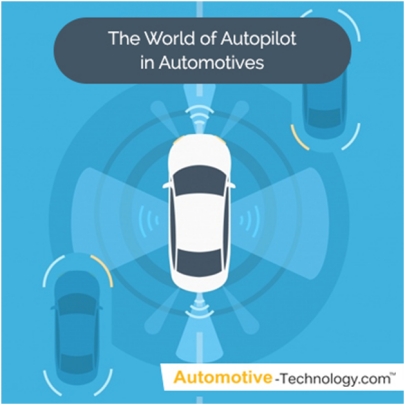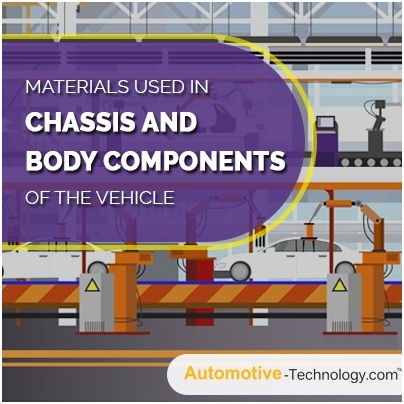Manufacturing Innovations in the Automotive Industry: 13 Key Advances Shaping the Future
Introduction
The automotive industry has always been at the forefront of technological advancements, continuously evolving to meet the demands of consumers and adapt to changing market trends. One of the key areas where innovation has taken center stage is manufacturing. With the rise of automation, digitalization, and sustainable practices, manufacturing processes in the automotive industry have undergone remarkable transformations. This article explores some of the groundbreaking manufacturing innovations that are shaping the future of the automotive industry.
Manufacturing Innovations in the Automotive Industry
1. Emergence of Smart Manufacturing and Industry 4.0
The notion of Industry 4.0 has brought about a transformative impact on manufacturing, particularly within the automotive sector. Intelligent factories integrated with cutting-edge sensors, Internet of Things (IoT) gadgets, and real-time data analysis are spearheading enhanced efficiency and adaptability throughout the production journey. These interconnected setups enable manufacturers to oversee equipment performance, anticipate maintenance requirements, and fine-tune production timelines. The smooth data exchange facilitates quicker decision-making, minimized periods of inactivity, and heightened overall output.
2. Additive Manufacturing and 3D Printing
Additive manufacturing, commonly known as 3D printing, has found its niche in the automotive industry. It offers the ability to create complex geometries and lightweight structures, which can lead to improved vehicle performance and fuel efficiency. Automakers are utilizing 3D printing for rapid prototyping, custom parts production, and even manufacturing certain components of electric vehicles (EVs). This technology not only reduces waste but also accelerates the product development cycle.
3. Electrification and Self-Driving Cars
The move towards electric and autonomous vehicles has triggered changes in manufacturing approaches. Electric vehicles necessitate distinct components like batteries and electric drivetrains, leading to the creation of fresh production lines and methodologies. Additionally, the incorporation of autonomous driving capabilities requires advanced sensors, cameras, and software, influencing both vehicle design and production. These advancements are compelling automotive manufacturers to reconsider their assembly processes and allocate resources for specialized workforce training.
4. Sustainable Practices
Manufacturing innovations in the automotive industry are increasingly focused on sustainability. Automakers are implementing eco-friendly manufacturing processes that reduce energy consumption, water usage, and waste generation. Recycled materials are being incorporated into vehicle components, and the concept of circular economy is gaining traction. Additionally, some manufacturers are exploring renewable energy sources to power their facilities, further reducing their carbon footprint.
5. Human-Robot Collaboration
Robots have been a staple in automotive manufacturing for decades, but recent innovations involve closer collaboration between humans and robots. Advanced robotics equipped with sensors and artificial intelligence (AI) can work alongside human operators, enhancing precision and efficiency. This human-robot collaboration is particularly valuable for tasks that require dexterity and attention to detail, ensuring high-quality production while reducing the risk of injuries.
6. Advanced Materials and Lightweighting
Manufacturing innovations in the automotive industry are closely tied to advancements in materials science. Engineers are developing new materials and composites that are not only strong and durable but also lightweight. This focus on lightweighting is essential for improving fuel efficiency and extending the range of electric vehicles. Advanced materials like carbon fiber reinforced polymers (CFRP) and aluminum alloys are being incorporated into vehicle structures, reducing overall weight without compromising safety.
7. Integration of Augmented Reality (AR) and Virtual Reality (VR)
The automotive manufacturing sector is adopting the use of AR and VR technologies, primarily in design, prototyping, and training endeavors. Augmented reality enables designers to envision and refine virtual vehicle models, simplifying the design enhancement process and the detection of potential problems. Within the manufacturing setting, technicians can leverage AR for immediate access to instructions and data overlays during the assembly of intricate components. Virtual reality is also applied for immersive training initiatives, enabling assembly line personnel to rehearse tasks within a virtual realm before engaging with real vehicles.
8. Digitizing the Supply Chain
Automotive manufacturing spans beyond the assembly line, encompassing the entire supply chain. By embracing digitalization and integrating data throughout the supply chain, improved coordination, transparency, and agility are achieved. Manufacturers can monitor the real-time movement of raw materials, components, and finished goods, thus optimizing inventory management and mitigating disruptions. This digitization also amplifies traceability, a pivotal aspect of quality assurance and adherence to regulations.
9. On-Demand and Customized Manufacturing
Advances in manufacturing technologies are enabling on-demand and customized production, allowing automakers to cater to individual customer preferences. Mass customization is becoming more feasible as production processes become more flexible and adaptable. Customers can choose from a variety of options, such as color, features, and performance enhancements, and the vehicles can be manufactured with minimal delay. This approach not only enhances customer satisfaction but also reduces excess inventory and waste.
10. Predictive Maintenance and AI-driven Optimization
With the integration of sensors and data analytics, automotive manufacturers are adopting predictive maintenance practices. Machine learning algorithms analyze real-time data from production equipment to predict potential breakdowns or maintenance needs. This proactive approach reduces unplanned downtime, increases the lifespan of machinery, and optimizes maintenance schedules. Artificial intelligence is also applied to optimize production processes by analyzing data and identifying areas for improvement, leading to more efficient and cost-effective manufacturing.
11. Cybersecurity in Manufacturing
As manufacturing processes become more connected and digital, cybersecurity becomes a critical consideration. The automotive industry relies heavily on data exchange between various systems, which makes it vulnerable to cyber threats. Manufacturers are incorporating robust cybersecurity measures to protect sensitive data, prevent unauthorized access, and ensure the integrity of production processes. This includes implementing encryption, intrusion detection systems, and secure communication protocols to safeguard manufacturing operations.
12. 5G Connectivity for Manufacturing
The rollout of 5G connectivity is set to have a significant impact on automotive manufacturing. The high-speed and low-latency capabilities of 5G networks enable real-time communication between production systems, machinery, and robots. This facilitates remote monitoring, control, and diagnostics, allowing manufacturers to manage operations across multiple locations more efficiently. 5G also supports the massive data transfer requirements of Industry 4.0 applications, enhancing the overall connectivity and agility of manufacturing processes.
13. Digital Twins for Process Optimization
Digital twin technology involves creating virtual replicas of physical products, processes, or systems. In the automotive industry, digital twins are used to simulate and optimize various stages of the manufacturing process. Manufacturers can model the entire production line and test different scenarios before making changes to the real-world setup. This enables them to identify bottlenecks, streamline processes, and improve overall efficiency. Digital twins also provide valuable insights into the performance of individual components, allowing for data-driven decision-making.
Conclusion
The automotive industry is undergoing a transformative phase, driven by manufacturing innovations that align with technological advancements and changing consumer preferences. Smart factories, additive manufacturing, electric and autonomous vehicles, sustainable practices, and human-robot collaboration are just a few examples of the remarkable changes taking place. These innovations not only shape the way vehicles are produced but also contribute to greater efficiency, sustainability, and competitiveness within the industry. As the automotive landscape continues to evolve, manufacturers that embrace these innovations are poised to lead the way into a dynamic and innovative future.



